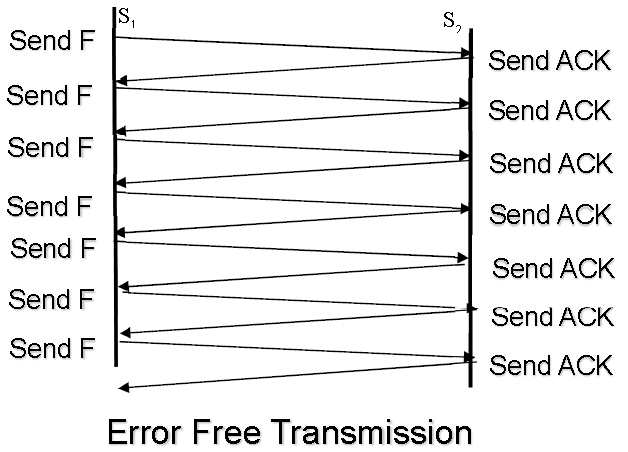Question
Networking: Consider two hosts, host A and host B. Host A wants to send 1351 octets of data to host B. Host B wants to
Networking:
Consider two hosts, host A and host B. Host A wants to send 1351 octets of data to host B. Host B wants to send 657 octets of data to Host A. Draw a diagram of the type shown as the sample below. Show the packets exchanged to transfer the data from A to B, and the data from B to A. Make the following assumptions: Transmission of data in both directions starts at the same time There is no congestion There are no perceptible queuing or processing delays The propagation delay for each packet is constant, and is the same in both directions Packets are transmitted at equally space time intervals. The time interval between the transmission of two successive packets is equal to the travel time (propagation delay) from the source to the destination Partially full packets (last octets in each stream) are forced to transmit immediately (as if they were full, no waiting) Each TCP segment can hold up to 200 octets of data. The second segment sent from B to A is lost (not received by host A). Fast retransmission and cumulative ACKs are being used No timeouts occur Make sure the sequence number and acknowledgement number are shown for every packet. For every packet also be sure to indicate any flag that is set.

Step by Step Solution
There are 3 Steps involved in it
Step: 1

Get Instant Access to Expert-Tailored Solutions
See step-by-step solutions with expert insights and AI powered tools for academic success
Step: 2

Step: 3

Ace Your Homework with AI
Get the answers you need in no time with our AI-driven, step-by-step assistance
Get Started


